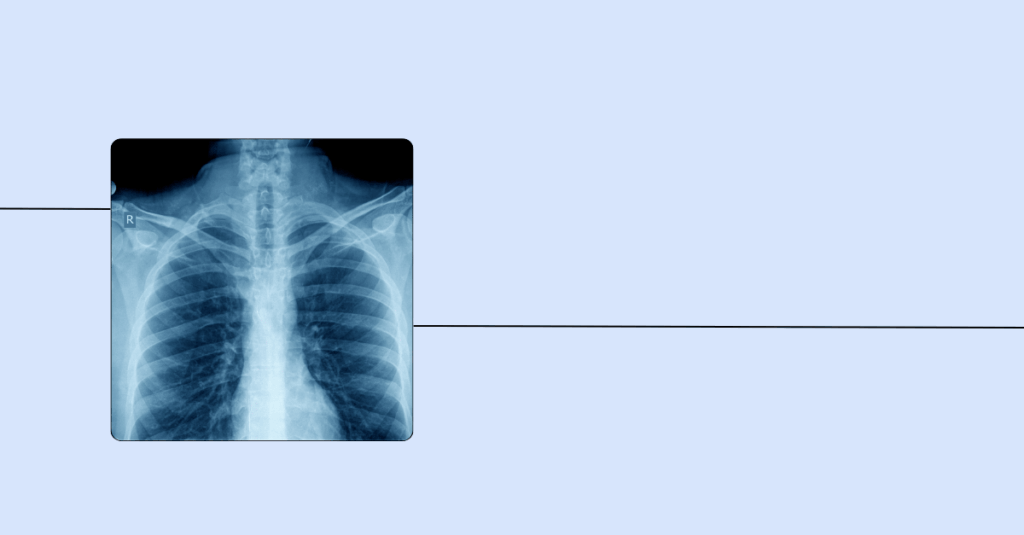When to Automate Your Enterprise Imaging Workflows
July 24, 2025

Chances are your health system has automated something without even realizing it. Do you send patients an automatic text before an appointment? That’s automation. Does your patient portal send an alert when it’s time to view test results? Automation again!
But if you aren’t used to building automated clinical workflows, it can be daunting to think about how you might use automation to save time for your department and improve patient care.
For too long, sharing patient imaging has been a frustratingly manual process. From burning CDs and DVDs to navigating complex VPNs and playing phone tag with referring hospitals, these outdated workflows are slow, inefficient, and prone to error. They create bottlenecks that delay diagnoses and disrupt patient care.
So, how do you identify the breaking points in your current process? When is it time to automate? If you’re managing imaging data, the signs are clear. Here’s when to automate your imaging workflows with an enterprise imaging interoperability platform like Medicom.
It’s a task performed frequently, on a schedule, or in high volumes.
The first place to look for automation opportunities is in your most repetitive tasks. Which workflows do your imaging technologists, PACS administrators, or medical records staff perform over and over again?
Tasks that happen daily or on a set schedule are prime candidates for automation because the efficiency gains are immediate and substantial. Think about the process of preparing for a patient’s upcoming specialist visit.
Example: A scheduled appointment in the EHR should automatically trigger a search for relevant prior exams. Manually searching for priors for every patient on tomorrow’s schedule is a huge time sink. When you’re tempted to create a daily worklist for this, you’ll know it’s a perfect fit for automation.
Medicom’s intelligent, rules-based workflows excel here. You can configure triggers based on events initiated in your RIS or EHR. For example:
- WHEN a patient is scheduled for an oncology follow-up, DO automatically query connected partner facilities for relevant prior PET or CT scans from the last 24 months and ingest them into the local PACS.
This eliminates the manual “scramble for priors,” ensuring radiologists have a complete patient history before the patient even arrives.
It involves moving complex information between clinical systems.
Let’s be honest: manually “reconciling” patient data is time-consuming and dangerously error-prone. Exporting DICOM files, uploading them to a portal, and then attempting to match a patient’s external Medical Record Number (MRN) with your internal one is a recipe for delays and data integrity issues.
Tasks that involve moving data between disparate clinical systems, like an external hospital’s PACS, your health system’s VNA, and the patient’s record in the EHR, are perfect for automation. Medicom acts as a universal translator and routing hub for this complex data.
The key question is: does this workflow require moving imaging data from one system to another? If the answer is yes, it must be automated. The risk of error in manual data entry or patient matching is too high.
Instead of manual uploads, an automated workflow can handle the entire process:
- WHEN a new trauma study is received from a referring emergency department, DO use FHIR and HL7 data to automatically reconcile patient identifiers, normalize the DICOM tags, and route the study directly to the on-call radiologist’s worklist.
It’s a manual process that doesn’t require clinical judgment.
Another key factor is whether a task truly requires a human touch, specifically, high-level clinical decision-making. Does burning a CD require the skills of a radiologist or an experienced technologist? Absolutely not. These are low-value, administrative tasks that drain resources.
Identify the tasks your highly-skilled team wishes they didn’t have to do.
Simply ask:
- Is this a task we perform dozens of times a day?
- Does it involve the same manual steps every single time?
- Do I wish my staff could be doing anything but this?
- Is it a chronic source of frustration or friction for my staff?
If the answer to these questions is “yes,” it’s time to automate. Tasks like burning CDs, responding to routine image release requests, or manually uploading outside images are not only tedious but also introduce unnecessary security risks and delays.
It takes your team away from what truly matters: the patient.
Ultimately, the most important reason to automate is to free your clinical teams to focus on their core, high-value mission: patient care.
Example: Consider how much time a manual imaging task is taking away from patient-facing activities or critical diagnostic work. If staff members are spending more than 20 minutes per patient coordinating outside image transfers, that’s a significant drain on efficiency and a direct impact on the patient experience.
That time adds up. Consider a workflow that saves just 15 minutes per inbound study. Across hundreds of transfers a month, that translates to thousands of hours saved per year, hours that can be reallocated to:
- Radiologists: More time focused on diagnosis and physician collaboration, not chasing down prior exams.
- Technologists: More time on patient care and safety, not managing CDs.
- IT & PACS Teams: More time on strategic projects, not troubleshooting one-off connection failures.
By automating the manual, repetitive, and error-prone steps in your imaging workflows, you do more than save time. You accelerate the speed of diagnosis, reduce delays in treatment, and give your teams the tools they need to operate at the top of their licenses. You transform your imaging interoperability from a liability into a strategic asset.
—
Every healthcare organization’s path to automation is different, which can make it hard to know where to start. Our consultative process identifies your highest-impact workflows first, ensuring your initial steps deliver immediate value. Schedule a call to learn more.